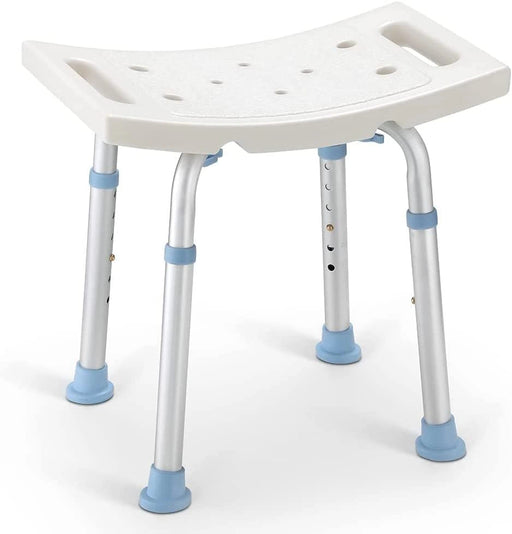
Rolling Walker VS Rollator
Embarking on a journey between the realms of rolling walkers and rollators, let’s unearth the distinct attributes that differentiate these popular mobility aids, steering you towards an informed decision.
| Criteria | Rolling Walkers | Rollators |
|---|---|---|
| Stability | High: Requires lifting for movement and offers substantial support. | Lower: Smooth mobility but might be slightly less stable due to rolling. |
| Convenience | Lower: No wheels/seats, potentially more physical effort needed. | High: Wheels and seats provide effortless movement and resting spots. |
| Cost | Typically under $100, more cost-effective for stability. | Generally around $130-$140, offering added convenience at a higher price. |
| Weight | Usually lighter due to simpler structure and lack of additional features. | Often heavier due to additional components and structure to support more functionalities. |
| Needs | Ideal for those requiring significant, consistent support during walking. | Suitable for those with decent strength and who prefer smooth and continuous movement. |
What is the Difference Between a Rolling Walker and a Rollator?
At first glance, a rolling walker and a rollator may appear to be quite alike. The primary distinction hinges upon their design and functionality:
Rolling walkers prioritize stability, often featuring no wheels or just two at the front, while rollators, with always three or four wheels, accentuate convenience and smooth mobility with additional features like brakes, seats, and baskets.
But there’s more to unfold about their differences:
1. Stability
Rolling walkers offer unparalleled stability, demanding lifting for movement, ideal for those needing substantial support while walking.
On the contrary, rollators enhance smooth mobility with their wheels but might sacrifice a bit of the stability offered by non-wheeled walkers.
2. Convenience
Rollators offer an effortless journey with smooth-rolling wheels and convenient seats, especially favorable outdoors.
In contrast, rolling walkers, lacking these features, might require more physical effort but provide a straightforward and typically lighter-weight solution.
3. Cost
Navigating the financial aspect, rollators, with their additional functionalities like seats and storage, often come with a steeper price tag compared to rolling walkers.
Specifically, you may find rolling walkers are generally priced under $100, providing a cost-effective choice for reliable stability. On the other hand, the enhanced convenience of rollators comes at a higher cost, typically around $140.
4. Weight
When considering the aspect of weight, rolling walkers and rollators present another crucial point of distinction.
Rolling walkers, due to their simpler structure and lack of additional features like seats and baskets, often tip the scale to be lighter.
Rollators, while boasting a smooth ride and additional features, tend to be on the heavier side due to their extra components and sturdier build designed to support seated weight.
5. Needs
Aligning your choice with the physical capabilities and lifestyle of the user is pivotal. While rollators might cater well to those with decent strength and a penchant for outdoor activities, rolling walkers might be the beacon for those requiring robust stability.
Conclusion
In the rolling walker versus rollator debate, your choice should harmoniously blend with specific needs, lifestyle, and financial considerations.
Understanding their unique strengths and weaknesses empowers you to enhance mobility, independence, and quality of life judiciously.
Recommend Products
-
 Sale
Sale
Standard - 300LBS Capacity Shower Stool
Original price $51.99From Original price $28.99Original price $51.99Current price $28.99From $28.99Current price $28.99OasisSpace Medical Square Shower Stool for Bathtub OasisSpace Square Shower Stool for Bathtub is approved as the highest standard(FDA) for medical...
View full detailsSaleOriginal price $51.99From Original price $28.99Original price $51.99Current price $28.99From $28.99Current price $28.99 -
 Sale
Sale
300LBS Capacity Raised Toilet Seat with Arms
Original price $120.99From Original price $69.99Original price $120.99Current price $69.99From $69.99Current price $69.99OasisSpace Raised Toilet Seat with Arms - Safe and Convenient OasisSpace Raised Toilet Seat with Arms provides stable support for users to sit dow...
View full detailsSaleOriginal price $120.99From Original price $69.99Original price $120.99Current price $69.99From $69.99Current price $69.99 -

350LBS Capacity 2 Wheel Walker
From Original price $39.99Original price$39.99From $39.99Current price $39.99Product Advantages OasisSpace's 350LBS Capacity walker offers a fusion of lightweight design and sturdy support, crafted from high-grade anodized ...
View full detailsFrom Original price $39.99Original price$39.99From $39.99Current price $39.99 -

Wall Mounted - 400LBS Capacity Teak Folding Shower Seat
From Original price $131.99Original price$131.99From $131.99Current price $131.99Advantages OasisSpace Teak Wall-Mounted Shower Seat adopts a folding design, which can save space to the greatest extent and can be folded up at a...
View full detailsFrom Original price $131.99Original price$131.99From $131.99Current price $131.99 -
 Sale
Sale
Padded & Bariatric - 500LBS Capacity Heavy Duty Shower Stool
Original price $57.99From Original price $36.99Original price $57.99Current price $36.99From $36.99Current price $36.99OasisSpace Medical Heavy Duty Bariatric Shower Stool OasisSpace Medical Heavy Duty Bariatric Shower Stool is approved by the FDA, which is the hig...
View full detailsSaleOriginal price $57.99From Original price $36.99Original price $57.99Current price $36.99From $36.99Current price $36.99 -
 Sale
Sale
300LBS Capacity Stand Alone Toilet Safety Rail
Original price $69.99From Original price $44.99Original price $69.99Current price $44.99From $44.99Current price $44.99OasisSpace Toilet Safety Rails - Fit Any Toilet OaisSpace stand-alone toilet safety rails provide sturdy support for the elderly and people with ...
View full detailsSaleOriginal price $69.99From Original price $44.99Original price $69.99Current price $44.99From $44.99Current price $44.99







